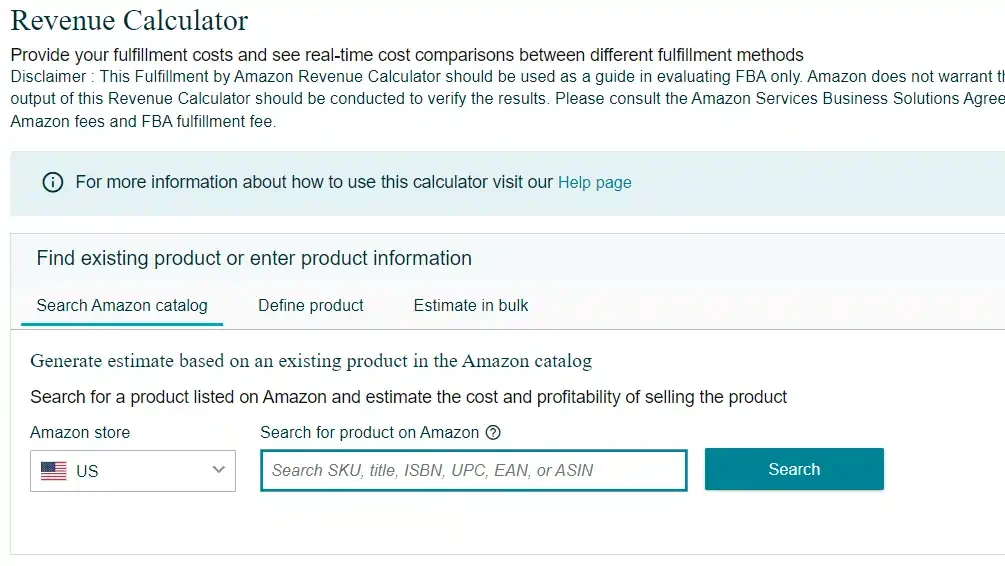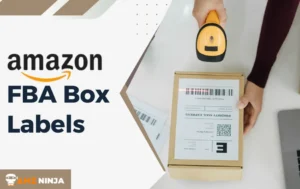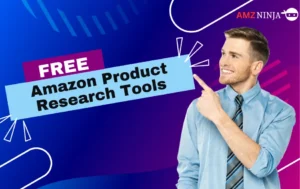
When Jeff Bezos' net worth swings billions overnight, Amazon's marketplace still remains a goldmine for entrepreneurs. The chances of achieving success on Amazon are very slim, however; with only 10-20% of the sellers on Amazon succeeding.
Mastering product research is integral to success.
You can consider Amazon as an ocean of 353 million products for that hidden treasure which may take your sales to new dimensions. That challenge—or rather, opportunity—is this: Amazon FBA product research was this: in 2023, Amazon pulled through with a whopping $574 billion in revenues, with 23% coming from third-party sellers alone.
In this guide, you will find out how to conduct laser-focused Amazon FBA product research that turns ‘just another needle in the haystack' into a standout success story across the globe's largest online marketplace.
Why Does Amazon FBA Product Research Matter?
Product research matters immensely in the world of Amazon FBA, as it can make the difference between a thriving business and a costly failure. Let's dive into why it's so crucial:
The Power Of Data Backed Decisions
Let's assume you're about to invest your hard-earned money into a product.
Would you rather:
A) Guess and hope for the best?B) Make a data-driven decision based on solid research
If you Chose B, you're on the right track! Here's why product research matters:
- Avoiding Costly Mistakes
- Identifying Untapped Opportunities
- Being Ready with the Upcoming Trends
Product research is the secret sauce for a winning Amazon FBA business. It's all about finding those golden products that people want, with less competition and juicy profit margins. Good research means smarter choices, fewer risks, and a better shot at hitting it big on Amazon.
Amazon Demand & Trends Analysis (Consumer Interest)
Understanding product demand on Amazon is like surfing – you need to catch the right wave at the right time. Here's how to become a pro surfer in the Amazon ocean:
1. Using Best Seller Rank (BSR)
Here's a quick guide to have an overview of BSR along with the estimated monthly sales:
| BSR Range | Estimated Monthly Sales |
|---|---|
| 1-1,000 | 1,000+ |
| 1,001-10,000 | 100-1,000 |
| 10,001-100,000 | 10-100 |
Pro Tip: Aim for products with a BSR between 1,000-5,000 for a sweet spot of demand and competition.
2. Analyzing Seasonal Patterns
Having a good understanding of seasonality is crucial for inventory management and marketing strategies:

- Use Amazon's Tools
- Amazon Brand Analytics provides insights into search trends and seasonal shifts in demand.
- Create a Seasonal Calendar
Map out key dates and events relevant to your products:- Holidays (Christmas, Halloween, etc.)
- Back-to-school season
- Change of seasons
- Analyze Historical Data
Look at your past sales data to identify:- Peak selling periods
- Slow seasons
- Year-over-year growth trends
- Plan Ahead
Use your seasonal insights to:- Adjust inventory levels
- Plan marketing campaigns
- Optimize product listings with seasonal keywords
Some products are like Christmas trees – they shine bright but only for a season.
For example, swimwear sales might spike in summer, while winter coats peak in colder months.
3. Ride the Trend Wave

Use Google Trends to spot rising stars in product categories.
Here's what to look at:
| What To Check? | Why It Matters? | Best Tools To Use! |
|---|---|---|
| Search Volume | Shows interest (High search volume means people are interested. Tools can show you how many folks are searching for your product each month) | Jungle Scout |
| Sales Speed | Indicates demand (This is about how fast a product is flying off the shelves. If it's selling fast, that's a good sign. Look at the sales history of similar items to get a clue.) | Helium 10 |
| Seasonal Trends | Reveals patterns (Some stuff sells better at certain times of the year. Knowing these trends helps keep your sales steady.) | Google Trends & Amazon Data |
Knowing what people want and spotting trends is key for nailing Amazon FBA product research. You need to see if there's enough buzz around the product you're eyeing.
Remember, timing is everything!
4. Study Customer Reviews
Checking out what people are saying about similar products can give you valuable insights. Use this info to tweak your offerings and meet customer expectations better.
Customer reviews provide invaluable feedback that can shape your product strategy and improve your offerings.
Use Review Analysis Tools
Tools like Jungle Scout and Helium 10 offer powerful features:
- Sentiment analysis to gauge overall customer satisfaction.
- Keyword extraction to identify common themes.
- Trend tracking to spot emerging issues or praise.
These comments can help you understand how your product performs across different seasons.
Reviews are goldmines of information. Look for patterns in customer feedback to identify gaps in the market or potential product improvements.
5. Finding Profitable Niches
As an Amazon seller, finding the right niche for your business is one of the stepping stones to being profitable in FBA. Here are a few points you can consider:
1. Follow the Breadcrumbs:
Start broad, then narrow down.
Suppose, for Postpartum Moms:
Health & Fitness → Yoga → Barre Yoga → Barre Yoga
2. Use the “Rule of 10”
Look for products with at least 10 estimated daily sales. This indicates a healthy demand without oversaturation.
3. Analyze the Competition
Aim for niches where:
6. Checking Out the Competition
Here's how to size up your Amazon competition:
| Aspect | What to Check | Why It Matters |
|---|---|---|
| Listings | Descriptions, images | To make your product stand out |
| Pricing | Competitor prices | To set a competitive price |
| Reviews | Number, quality, feedback | To find areas for improvement |
| Sales Data | Estimated sales figures | To gauge market potential |
- Count the Top Sellers: If the first page is dominated by a few brands, proceed with caution.
- Review Quality: Look for products with less than 500 reviews. There might be room for improvement!
- Analyze Listings: Poor listings from competitors spell opportunity for you.
Competitive Analysis Checklist:
Calculating Profit Margins
By checking demand and figuring out profit margins, you can pick products that are more likely to succeed. This way, you're not just throwing money at a product and hoping for the best. You're making smart choices that can lead to real profits in the Amazon marketplace.
Now for the million-dollar question, you gotta know if selling a product will make you money. This means adding up all the costs and seeing if the selling price covers them with some profit left over.
Here's what to consider:
- Cost of Goods Sold (COGS): What does it cost to make or buy the product?
- Amazon FBA Fees: What does Amazon charge for storage, shipping, and other stuff?
- Amazon Shipping Costs: What does it cost to get your product to Amazon's warehouses?
- Advertising Costs: What you spend on marketing your product.
To figure out your profit margin, use this formula:
To calculate the profit margin for your Amazon FBA products, use the following formula:
Ensure to input the correct values for the Selling Price and Total Costs to determine your profit margin accurately.
For more on crunching numbers and boosting profits, see our article on Amazon FBA profitability.
Net Profit = (Selling Price - FBA Fees - Cost of Goods - PPC Costs - Other Expenses)
Profit Margin = (Net Profit / Selling Price) x 100Target: Aim for a profit margin of at least 30% to account for unforeseen expenses and price fluctuations.
| Cost Breakdown | Example Cost ($) |
|---|---|
| Cost of Goods Sold | 5.00 |
| Amazon FBA Fees | 3.00 |
| Shipping Costs | 1.00 |
| Advertising Costs | 1.50 |
| Total Costs | 10.50 |
| Selling Price | 15.00 |
| Profit Margin | ~30% |
Use the FBA Calculator
Input all costs and potential selling prices using the Amazon FBA Calculator.

Factor in PPC Costs
Allocate about 10-15% of your selling price for initial advertising.
Consider Long-term Storage Fees
Don't let slow-moving inventory eat into your profits.
Successful Amazon FBA product research is a blend of art and science. It requires a keen eye for trends, a solid understanding of data, and the patience to thoroughly analyze potential products.
Nailing Your Product Launch
Launching a product on Amazon FBA isn't just about luck; it's about smart moves and solid prep.
By following these steps, you can turn your product research into successful launches and ongoing growth. For more tips and strategies, visit our comprehensive guides on Fulfilled by Amazon.
Tools For Amazon FBA Product Research
Picking the right tools can make or break your Amazon FBA product research. Let's check out some popular tools and how to use the data they provide.
| Tool Name | Key Features | Best For |
|---|---|---|
Jungle Scout | Product tracking, sales estimates, keyword research | Beginners and experienced sellers |
Helium 10 | Keyword research, product tracking, competitor analysis | Comprehensive market analysis |
| AMZ Scout | Product research, keyword tracking, sales estimates | Identifying trending products |
Viral Launch | Product discovery, market intelligence, competitor tracking | Informed decision making |
| DataHawk | Comprehensive Data Collection, AI-Powered Analytics, Product Performance Tracking, Competitor Analysis | Amazon Sales Analytics |
These tools help you spot profitable products, keep an eye on market trends, and make smart choices based on data.
For more insights, visit our article on Amazon FBA tools.
Quenching Queries Related to Amazon FBA Product Research
Why is Product Research important for Amazon FBA?
Effective product research helps identify high-demand, low-competition products, ensuring better sales and profitability.
How does Best Seller Rank (BSR) help in Product Research?
BSR indicates a product's sales performance. A BSR between 1,000-5,000 is ideal for balanced demand and competition.
Why Should I Analyze Customer Reviews?
Customer reviews offer insights into product performance, potential improvements, and market gaps, helping refine your product strategy.
How Can I Use Seasonality to My Advantage?
Understanding seasonal trends helps in planning inventory and marketing strategies, ensuring you capitalize on peak selling periods.
Why are Profit Margins Crucial in Amazon FBA?
Maintaining healthy profit margins ensures your business remains sustainable and profitable. Use the FBA Calculator to assess costs accurately.
Making It Big on Amazon FBA
Now as we complete this article on Amazon FBA product research, it is pretty clear that the success of Amazon FBA hinges on the combination of data-driven decision-making, strategic analysis, and using the right tools.
So far, we understood that the use of the right tools (like Helium 10 or Jungle Scout) along with the analysis across the reviews is something in itself. Also, the AI-powered review analysis can take you through spotting those hidden opportunities for improving your product.
Additionally, always use the FBA Calculator to ensure your products maintain healthy profit margins.
Remember, successful Amazon FBA selling isn't about finding a single “Magic Product.” But more of developing a systematic approach to product research, and continually refining your strategies.








